If you’re dipping your toe into the world of medicinal mushrooms, chances are you’ve heard the word “beta-glucans” thrown around a bunch of times. If you’re glossing over that word as you read, but curious what it might mean, you’ve come to the right place.
In this article, we’re covering what beta-glucans are, the history behind when and how they were discovered, how they may boost health, and more.
But first, let’s quickly answer the question…
What are beta-glucans?
Beta-glucans are a fiber found in the cell walls of various living organisms, including yeast, bacteria, fungi (like mushrooms), algae (like seaweed), and other plants. The plants that contain them utilize them as a source of energy to power the organism. What’s unique about beta-glucans is that they are biologically active and have been shown in various studies to play a role in potential health benefits.
For medicinal mushrooms in particular, beta-glucans have been shown to be tightly bound with a tough amino-glucose polymer called chitin - a compound that’s also been found in the shells of insects and crustaceans. Humans are not able to easily digest medicinal mushroom beta-glucans hidden beneath the chitin without significant heating before consumption.
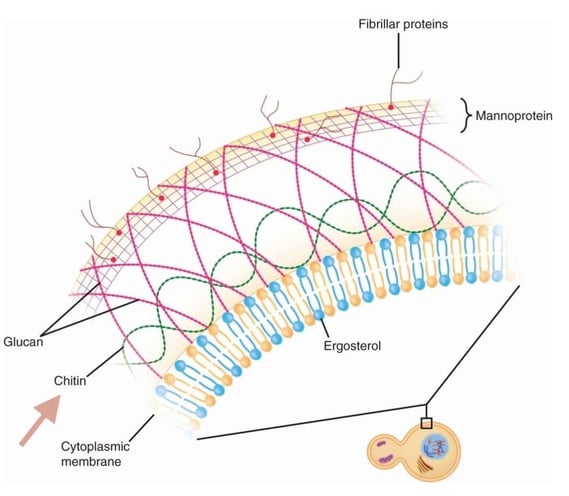
As we start to explore some studies that highlight the role beta-glucans can play in health benefits, it may be helpful to quickly review the history of beta-glucans and how they’re presence came to be known by the science and nutritional health communities.
The history of beta-glucans
Initial beta-glucan research began in the 1940’s when Louis Pillemer, Ph.D., and his colleagues first started studying the drug Zymosan. At the time, they were focused on the drug’s ability to help with immunotherapy, but it wasn’t until the 1960’s that another scientist, Nicholas DiLuzio, Ph.D., conducted additional research and discovered that the immune-activating compound in the drug was actually Beta-1, 3-D-glucan (a.k.a. 1,3 beta-glucans)!
Leading up to 1975, further research on beta-glucans was conducted to better understand the compound’s potential healing capabilities - and in ‘75, Peter W. Mansell, M.D., and his colleagues published a study on the potential anticancer capacity of beta-glucans. From there, further studies on beta-glucans have been conducted and the discovery that this compound can actually be sourced from natural compounds relatively easily was uncovered.
What are the sources of beta-glucans?
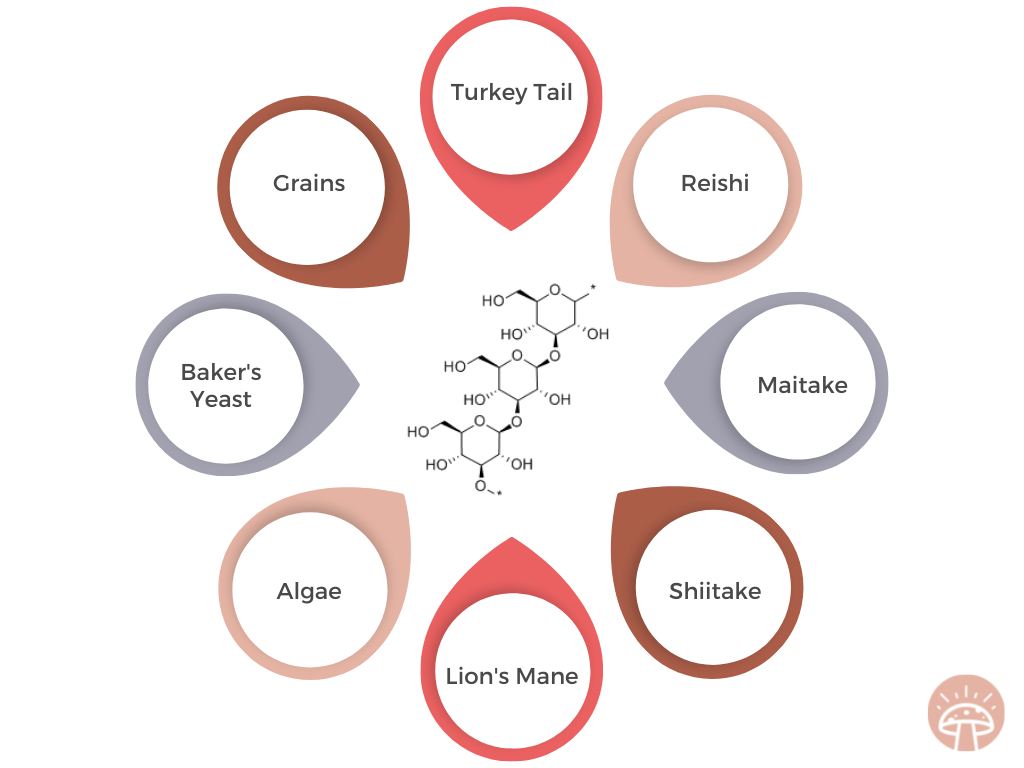
As mentioned before, beta-glucans can be found in the cell walls of various organisms, including:
- Baker’s yeast
- Good bacterias
- Algae (e.g., seaweed)
- Grains (e.g., oats, barley, etc.)
- And, of course/our favorite, medicinal mushrooms (e.g, turkey tail, reishi, shiitake, maitake)
For the purposes of this article, and since it’s kind of our bread and butter, we’ll be focusing on beta-glucans found in medicinal mushrooms.
As you consider the various, and relatively accessible, ways to incorporate beta-glucan heavy foods and supplements into your diet, you may also be asking yourself: what are the health benefits of beta-glucans?
We’re so glad you asked.
What are the health benefits of beta-glucans?
The health benefits of beta-glucans are still undergoing studies, and potential use cases for medicinal mushrooms that contain a high level of beta-glucans are growing daily. While beta-glucan research has been connected to a number of potential health treatments ranging from a topical skin ointment, to inflammation-fighting capacities, the well-known and documented health benefits of beta-glucan consumption include:
- Immune support and immune boosting: In a 2020 study published in Molecular Nutrition and Food Research, researchers found that beta-glucans have antioxidant properties and are potent immunomodulators (e.g., increase white blood cell count in the human body). This makes beta-glucans a strong defense function against immune threats. Furthermore, the study of beta-glucans has been shown to stimulate the creation of immune cells such as macrophages, neutrophils, and monocytes
- Heart health: Brands have utilized messaging around whole grain consumption being linked to better heart health since the FDA announced it in 1997. This claim was made solely on beta-glucan presence found in these foods. Since then, several studies have further linked beta-glucan consumption with improved heart health. One study noted that beta-glucan fibers may lower the levels of total and LDL (bad) cholesterol in your blood - both of which put humans at risk of developing heart disease.
- Cholesterol regulation: Furthering the studies on LDL cholesterol and beta-glucans, the presence of beta-glucan compounds have been shown to reduce the absorption of cholesterol into the digestive tract after eating. In fact, one study noted that consuming 3 grams of beta-glucans daily over the course of eight weeks decreased levels of LDL cholesterol by 15% and reduced total cholesterol by nearly 9%.
- Blood sugar regulation: Beta-glucans have been shown to slow sugar absorption into the bloodstream, thus making the presence of beta-glucans a potential aid in trying to control blood sugar.
- Healthy aging: While the evidence is in its early stages, studies have been conducted on fish to evaluate beta-glucan supplementation for healthy aging and longevity support. The study showed that beta-glucans may improve lifespan.
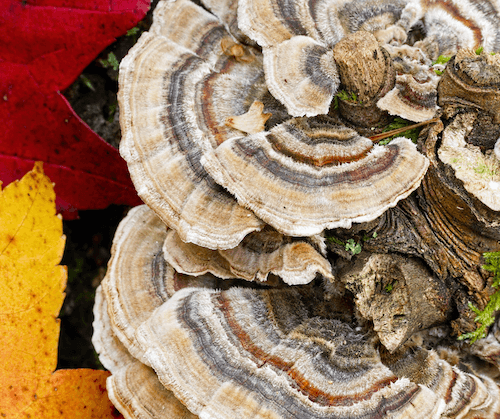 turkey tail mushrooms are very high in beta-glucans
turkey tail mushrooms are very high in beta-glucans
Two important notes about medicinal mushroom health benefits:
- Studies on medicinal mushrooms, beta-glucans, and their healing properties are still undergoing review. Many studies have been done in-vitro or on mice, and there is evidence to suggest that beta-glucans found in medicinal mushrooms are a natural and effective way to treat a variety of health needs. We hope to know more in the coming years.
- Beta-glucans cannot be made by the human body - this is why medicinal mushrooms serve as a great way to absorb beta-glucans into the body and reap the potential health benefits.
If you’d like to know more about medicinal mushrooms and health, check out our other articles on the health benefits of chaga, turkey tail, reishi, lion's mane, and other mushroom varieties.
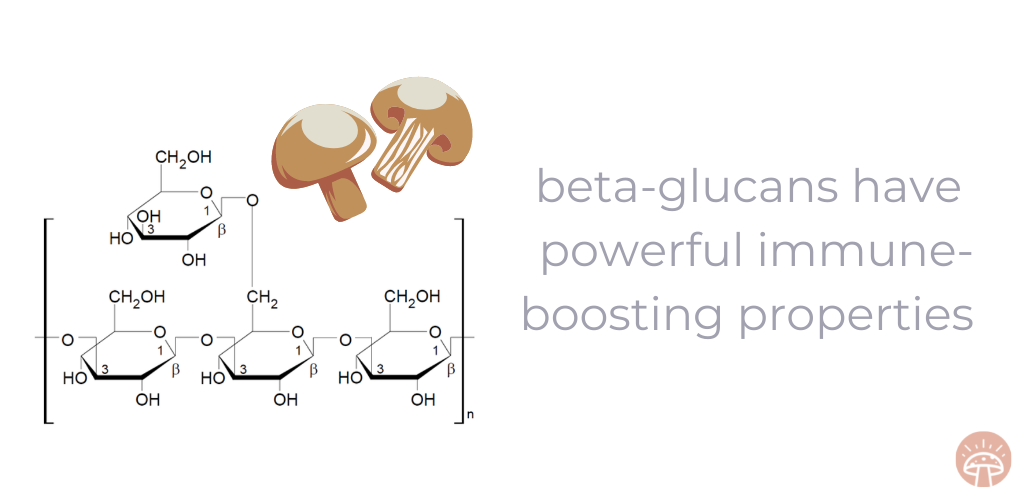
What medicinal mushrooms are highest in beta-glucan content?
Beta-glucans have been found naturally occurring in every species of medicinal mushroom and provide an immune boost when accessed properly. Wild mushrooms, in particular, are shown to have a substantial amount of beta-glucans - in fact, a study on 39 edible wild mushrooms highlighted the percentage of beta-glucans per mushroom by dry weight.
Turkey tail mushrooms and reishi mushrooms were shown to have the highest percentage of beta-glucan content. Let’s look at some of the most popular medicinal mushrooms’ beta-glucan content, organized from highest to lowest content in the table below:
|
Mushroom Species |
Cap Beta-Glucan Content (%) |
|
Turkey tail |
60.8 |
|
Reishi |
54 |
|
Maitake |
26 |
|
Shiitake |
19.8 |
|
Lion’s mane |
10 |
As we’ve noted, to access the potential health benefits of beta-glucans, it’s key to heat up the mushroom to a level where the bioactive compounds can be released and the human body is able to break them down. That process is only possible through proper extraction techniques.
How to access beta-glucan content through extraction
Only 20% of beta-glucans are soluble without significant heating. While beta-glucans found in grains dissolve easily in water and are fermentable while in your digestive tract, this is not the case with beta-glucans found in bacteria, fungi, and yeast.
If not broken down properly, insoluble beta-glucans simply absorb fluids when going through the digestive tract and serve as a great source of fiber, but will not be considered a helpful supplement for health and wellbeing. That’s why it is vitally important that the extraction processes for your mushroom supplements are done correctly to make the compounds bioavailable.
Do your research as you consider which product is best for you and remember that a good brand will always show a Certificate of Authenticity (CoA) detailing its methods and procedures for extraction.
With this in mind, let’s dive into the “why” with extraction.
Why do mushrooms need to be extracted to access beta-glucan content?
When looking for ways to add medicinal mushroom supplements into your daily health regimen, extractions are a popular way to consume the nutrients. The extraction process ensures that the beta-glucans become bioavailable and are easily digestible by the person consuming them.
Why is this the case? Because when mushrooms or mushroom powders are heated up - they can be steamed, simmered, or boiled - some of the chitin/beta-glucan bonds will be broken to make them more water soluble, and thus, more bioavailable for the human gut. Simply cooking them in a frying pan will not achieve the level of heat required to break these bonds and make the beta-glucans bioavailable.
The ideal extraction method for fungal beta-glucans: hot water extraction
The hot water extraction method uses hot water to dissolve soluble compounds found in the cell walls of mushrooms. The mushrooms are heated in water clocking in at 175–350°F for a certain period of time. After being heated, the remaining mushroom bodies will be discarded and the water will evaporate using a variety of methods. Those methods include spray drying, freeze drying, or infrared drying. What is left behind will be a powdered extract.
Now you can officially say you’re *beta* informed about beta-glucans - sorry, we couldn’t help ourselves. Want to learn more about the makeup of medicinal mushrooms? Check out this article here!

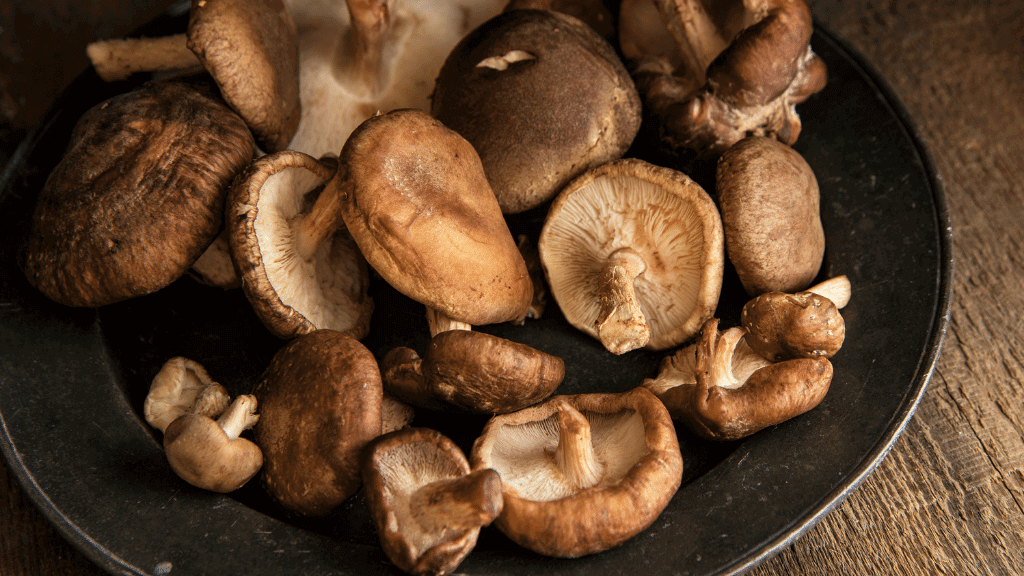
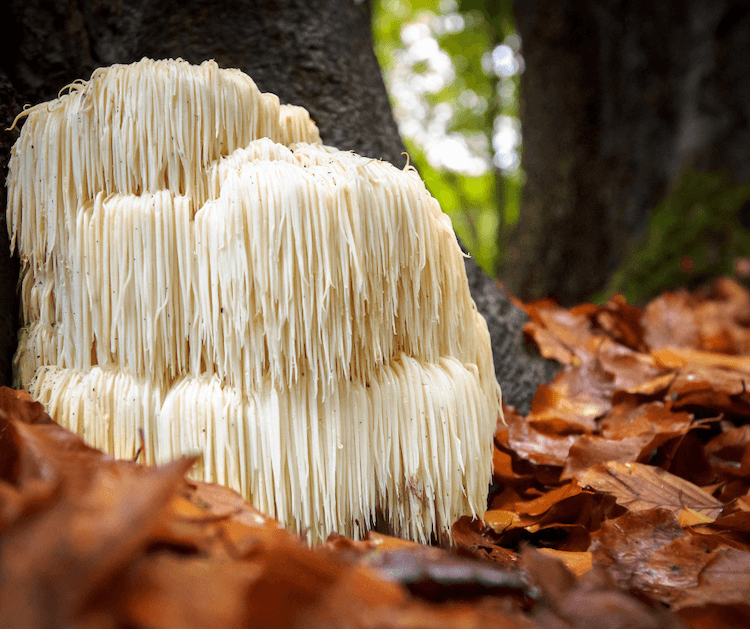


.png)
